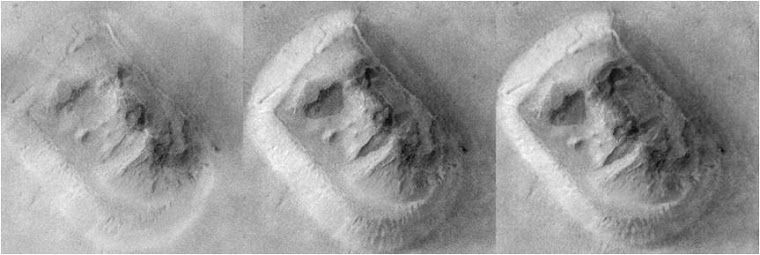Traci Watson Contributor
AOL News
(March 4) -- For decades, scientists have debated exactly what kind of cataclysm was responsible for the extinction of the dinosaurs. Did a giant rock from outer space blast T. rex and his ilk off the face of the Earth? Or was a huge volcanic eruption to blame?
Now the jury is in -- maybe. In Friday's issue of the prestigious journal Science, a "dream team" of 41 researchers from 12 nations declares that the evidence points overwhelmingly to a mountain-sized asteroid that walloped the planet 65 million years ago. The monstrous boulder left an equally monstrous scar, a 120-mile-wide dimple known as the Chicxulub crater on the Mexican coast.
"We assessed the whole picture," says Kirk Johnson of the Denver Museum of Nature and Science. "The answer is quite simple. ... The Chicxulub crater really is the culprit."
An allosaurus skeleton at the Carnegie Museum of Natural History in Pittsburgh, Pa.
Andrew Rush, AP
What killed off Earth's dinosaurs and many other life forms 65 million years ago? An international research team has concluded it was an asteroid that hit Mexico.
The holdouts who downplay the asteroid's role are unconvinced.
"It's the same old story from them," says Norman MacLeod of the Natural History Museum in London, referring to the team that wrote the new paper. "The authors conveniently forget to mention critical data."
But MacLeod and another prominent doubter, Gerta Keller of Princeton University, don't dispute that a colossal space rock hit the Earth roughly 65 million years ago. And whether or not that led to the demise of the dinosaurs, new research is painting an increasingly detailed picture of the hellish conditions after the asteroid's arrival.
It would take a mighty rock to do in the mighty lizards known as dinosaurs, and on that count the Chicxulub asteroid fits the bill. It was big -- more than seven miles across, three times the width of Manhattan -- and it was moving fast -- 20 times the speed of a rifle bullet. When it hit, the explosion unleashed a billion times more energy than the atomic bomb dropped on Hiroshima, says Gareth Collins of Imperial College London.
In a paper published last year, Collins found that the asteroid in 30 seconds drilled an initial crater 19 miles deep, nearly penetrating the Earth's crust. Earthquakes of up to magnitude 11 -- 1,000 times more powerful than the recent Chilean earthquake -- shook the area, and tsunamis more than 300 feet high inundated nearby coasts. The asteroid that created the crater was more than seven miles wide and moved 20 times faster than a rifle bullet.
The impact was so violent that it melted and vaporized both the asteroid itself and the spot the asteroid hit. Within an hour, melted rock had splattered as far as northern Canada, says David Kring of the Lunar and Planetary Institute. An immense plume of vaporized and melted material burst through the atmosphere and into outer space. Within a few hours, tiny drops from that plume began raining down through the atmosphere all across the Earth's surface.
As they fell, these drops grew hotter, literally broiling the planet for several minutes, according to another 2009 study. Any exposed animal "is not going to do so well," says the University of Vienna's Tamara Goldin, one of the study's authors.
The combination of dust, soot and caustic chemicals filling the air blotted out the sun, Kring says. The sky close to the crater first glowed red then went pitch black. All over the globe, a biblical darkness fell, lasting perhaps a week, maybe nearly a year.
The darkness shut down photosynthesis, the process by which plants capture sunlight to grow. Huge swathes of forest died. Entire classes of animals perished.
But that's where the narrative gets disputed. The authors of the new study say that more than 60 percent of species went extinct, including most dinosaurs. MacLeod, though, says that dinosaurs were in decline for millions of years before the asteroid hit. He also wonders why, if the asteroid strike was such a doomsday event, some classes of species survived and even thrived.
Keller questions even more basic claims, such as the dating of the asteroid strike. She argues that the Chicxulub rock hammered Earth hundreds of thousands of years before the mass extinctions shown in the fossil record.
Just such arguments -- and media coverage of them -- are what prompted the scientists to publish their new paper, Goldin says. After ignoring Keller and other skeptics for many years, the pro-crater forces got so frustrated that they decided to put all the evidence together.
"It is almost impossible to change the skeptics' minds," Goldin concedes. "But we hope we can communicate to the scientific community and the public that this impact-induced environmental catastrophe did happen."
Filed under: Nation, World, Science
Follow us on Facebook and Twitter.
2010 AOL Inc. All Rights Reserved.
Friday, March 5, 2010
Subscribe to:
Post Comments (Atom)

1 comment:
Hello Tom,
You have a very interesting Blog.
I look forward to some one-on-one discussions with you.
Take care,
Ed
Post a Comment